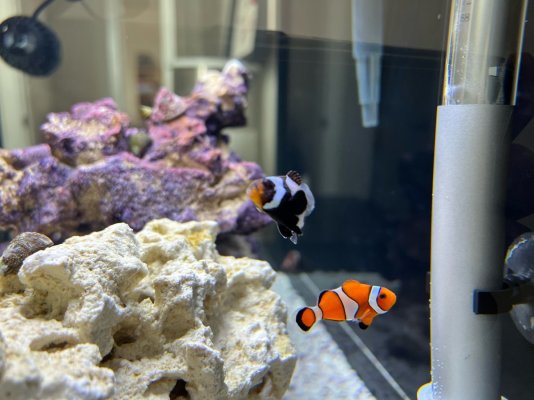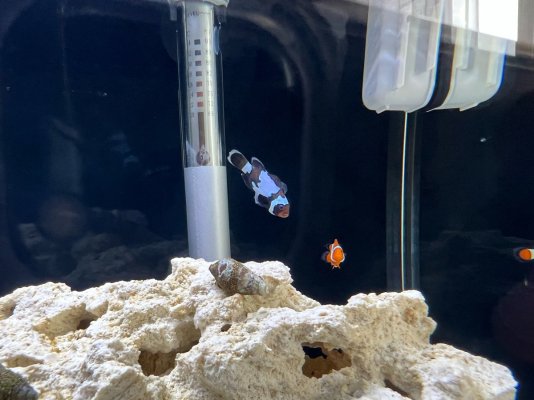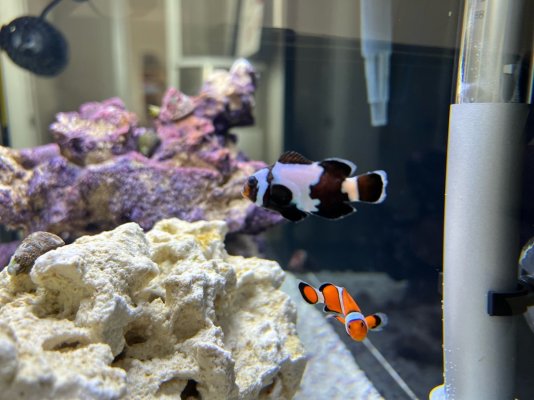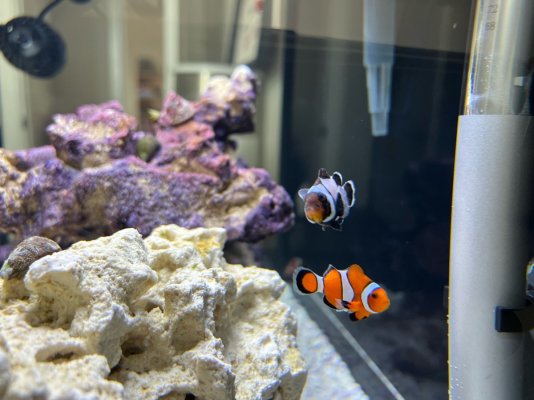I need some help! I got 2 clownfish that look to have caught something. They both seem to be eating still and swimming around the tank fine but their body color and coats look off.
They are my first two fish I got along with a hectors goby. I added all three of them to the tank about two weeks ago and recently put in a CUC. (Nassarius snails, tiger sand conch, blood shrimp, Ceriths snails, trochus snails, and bumble bee snails)
My water parameters look good my nitrate seems a bit high but everything else is where it should be.
Nitrate: 25
Nitrite: 0
Ammonia: 0
Temp: 79
phosphate: .03
Salinity: 1.026
if you could tell me what it is and best way to treat that’d be great.
I believe it's Brooklynella but this is my first fishtank and first fish so I am still learning and trying to figure it out.




They are my first two fish I got along with a hectors goby. I added all three of them to the tank about two weeks ago and recently put in a CUC. (Nassarius snails, tiger sand conch, blood shrimp, Ceriths snails, trochus snails, and bumble bee snails)
My water parameters look good my nitrate seems a bit high but everything else is where it should be.
Nitrate: 25
Nitrite: 0
Ammonia: 0
Temp: 79
phosphate: .03
Salinity: 1.026
if you could tell me what it is and best way to treat that’d be great.
I believe it's Brooklynella but this is my first fishtank and first fish so I am still learning and trying to figure it out.



















